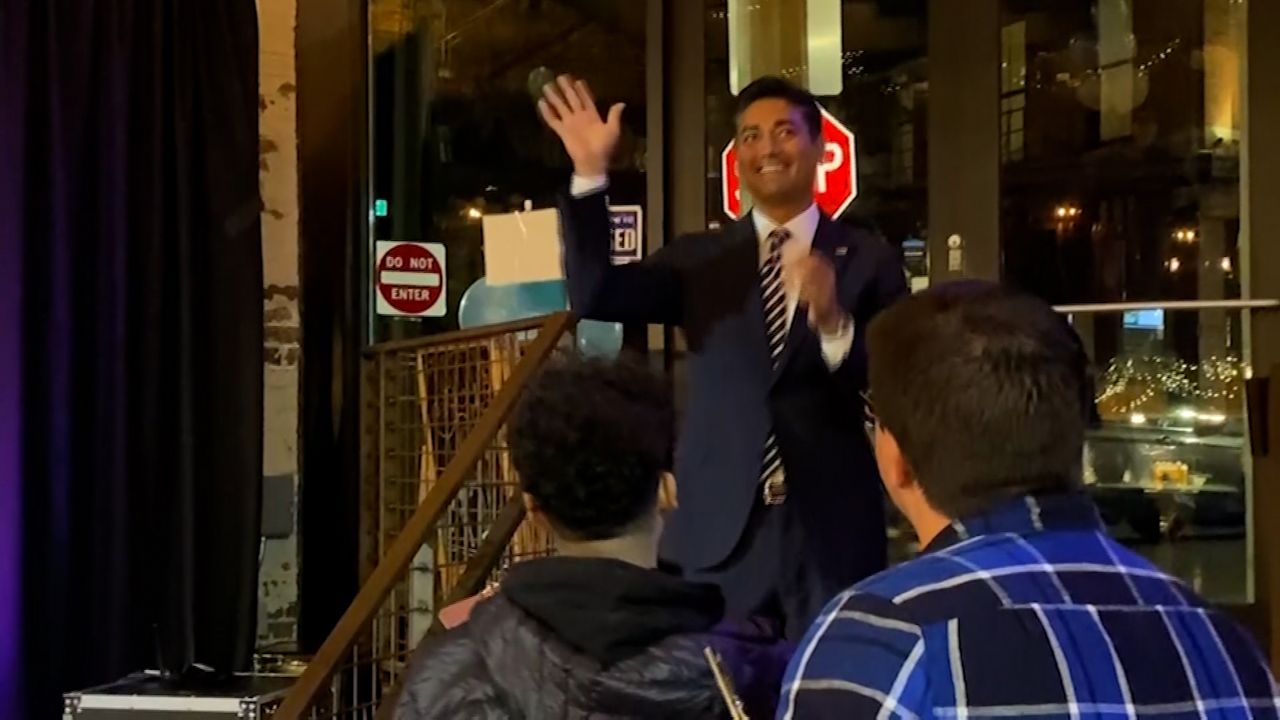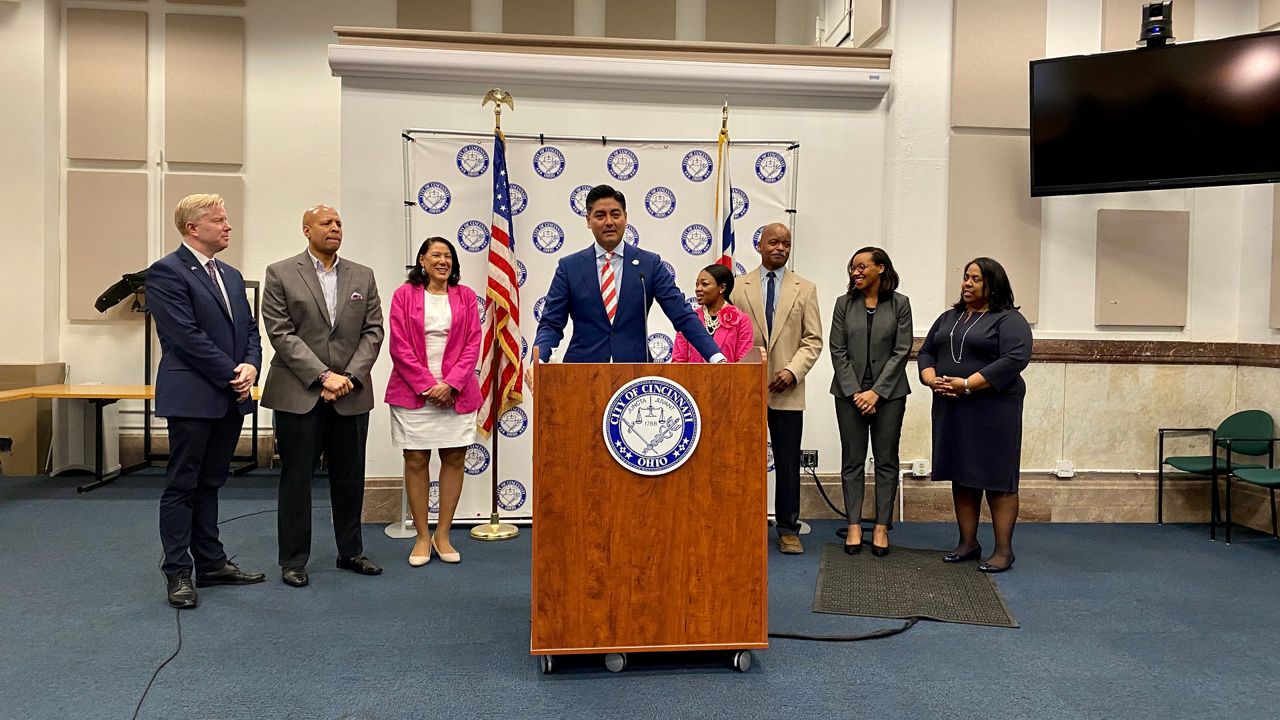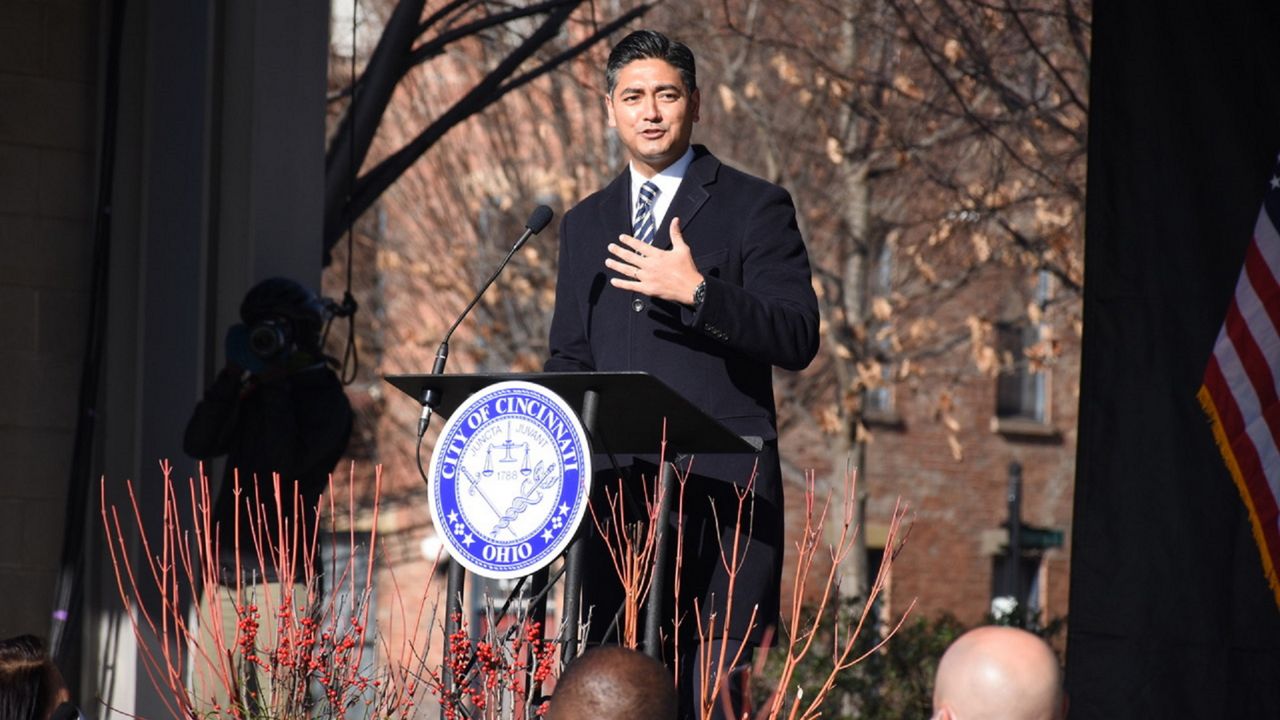CINCINNATI – It’s been a little more than three months since Aftab Pureval became Cincinnati’s 70th mayor.
What You Need To Know
- Mayor Aftab Pureval took office in January 2022
- Since his time on the campaign trail, his focus has centered on affordable housing, economic growth, public safety and climate action.
- In his first 100 days, Pureval has tried to get into the community to rebuild public trust
- One of Pureval's biggest tasks is to select a new city manager
When sworn in at Washington Park on a sunny winter day, Pureval promised a “new chapter in the city’s history.”
It was a continuation of his campaign pledge to bring an outsider’s perspective to City Hall. It helped him win by a near-historic margin in November, making him the first Asian-American mayor of any major city in the United States.
Pureval marked Wednesday as the 100th day of his mayoral term while the official 100th day is Friday, April 15.
“(My and City Council’s) overwhelming mandate (from voters) was to chart a new future for our city,” Pureval said Wednesday during a meeting of the City Council. “And in our first 100 days, we have stepped up and taken immediate action to begin that important work.”
During his brief time in office, the gregarious 39-year-old has ventured across Cincinnati, popping up at community events in 22 of the city’s 52 neighborhoods so far. That includes visiting nine schools and with “countless” businesses and nonprofit organizations, Pureval said.
“This council and I have remained focused on our strategic priorities, but also on changing the culture of City Hall and the public perception of City Hall. That requires a lot of work,” he added.
Pureval noted holding “one or two” press conferences a week is part of his plan to be “completely transparent and accessible” to the media and public.
“I don’t know if I can keep that pace up, but that’s certainly a commitment that I’m interested in keeping throughout all four of my years,” he said.

Pureval has made some bold policy choices, usually in lockstep with a mostly supportive City Council.
Some have been critical of the perceived closeness between Pureval and this City Council. Most members campaigned together last year, and eight of the nine Council members received endorsements from the Hamilton County Democratic Party, as did Pureval.
Despite policy similarities, they still have their disagreements, Pureval said. He cited a public hearing last month on a controversial zoning proposal aimed at lifting density restrictions.
“I think disagreement is good and I think debate is good,” he said. “What is not helpful… are personal attacks. When we disagreed about the density (issue), we (showed) we can disagree without being disagreeable.”
The crucial difference with the new council, Pureval said, is members are willing to work with one another.
“Right out of the gate, we rolled up our sleeves and focused on getting things done,” he said. “Without drama, without headlines, this council and our administration have worked together to make amazing progress on behalf of Cincinnatians.”
From Day 1, the new government has focused on a few key areas — affordable housing, economic growth, public safety and climate action.
In mid-March, the city announced the renewal of the Green Cincinnati Plan and created a goal of having an all-electric fleet of vehicles by 2035.
With leadership from Pureval and Vice Mayor Jan-Michele Lemon Kearney, Council passed a “game-changing” allocation in early March that committed $5 million to the Affordable Housing Trust Fund. The fund also received $15 million in private dollars, bringing the total to $57 million.
“I think the proudest moment was our decision to amend our fiscal stabilization policies,” Pureval said. “Not only does it put at least $1 million (and possibly) up to $5 million towards affordable housing every year, but it also puts significant money towards our pension fund.”
That’s the first additional money towards the city’s pension fund in a “lot of years.”
”So, at the same time that we were being good stewards of affordable housing, we were also being fiscally responsible,” he added. “That is the kind of governing I think Cincinnati expects from us.”
On Wednesday, City Council approved a plan to use federal COVID relief money to quadruple the funding for Cincinnati’s down payment assistance program and the design of a mixed-use pathway on the city’s West Side.

Council also approved a new, cheaper design to extend the Central Parkway bike lane north to Clifton. The design passed by the previous council was more expensive and off-road; this one will extend the on-street lane.
The new mayor and council have benefited from an unexpected $11 million in American Rescue Plan Act (ARPA) funds. The previous leadership team earmarked those dollars for other purposes, but they were eventually deemed ineligible.
The ARPA funds have helped jumpstart several pet projects, including pedestrian safety measures and buying new emergency vehicles for the Cincinnati Fire Department.
After these projects, the city will still have about $2.6 million in ARPA funds remaining.
Cincinnati also benefited from Congress passing the Bipartisanship Infrastructure Bill prior to the start of his term, which will help build a long-awaited companion span to the Brent Spence Bridge. And progress is finally starting to occur on the new Western Hills Viaduct, though that project won’t wrap until at least 2030.
While some parts of the job have come easy, others have had a learning curve. Pureval learned a lot during the first few winter weather events about items like road treatment and repairing potholes.
“I didn’t know how much of this job would be weather-dependent,” he said.
More serious challenges include ongoing issues related to the COVID-19 pandemic.
“The day we were sworn in, our city broke COVID infection rate records,” he recalled. “And in our first week, every day, we broke the record again and again.”
About a week into office, Pureval joined new Cleveland Mayor Justin Bibb to take action to get more COVID testing supplies for the hardest hit communities. Pureval thanked Cincinnati Health Department nurses and other public health workers for enabling the city to survive the last two years.
One of the biggest issues has been gun violence, which historically only gets worse as weather gets warmer.
“A city cannot grow unless we are safe,” Pureval said. “And unfortunately, cities across our country, including ours, have seen an increase in gun violence.”
The city has implemented what it calls a “multi-dimensional Summer Safety Plan.” Beyond targeting known hot spots for violence, the city is working with community partners on two initiatives aimed at curtailing youth violence.
It calls for a new mental health advocacy training program and a series of grants for community-based organizations to conduct violence prevention activities in targeted areas with the highest risk of violent crime.
The entire plan goes before the Budget and Finance Committee next week.

“By giving our neighborhoods and our children the focused care they need, we are working to create new pathways toward productive, healthy, and rewarding lives (for them),” Pureval said.
The administration and City Council used their first 100 days to showcase Cincinnati to the world and create a foundation for future growth, Pureval said. That includes partnering with REDI Cincinnati and Jobs Ohio to bring or keep hundreds of jobs to the region.
“I was proud of our city administration for working collaboratively with Jobs Ohio to not only keep Mass Mutual and its approximately 800 jobs in our city, but also encourage them to take up two floors of vacant space at The Banks.”
They also voted to help support the revitalization of the former downtown Macy’s headquarters into more than 300 units of market-rate housing.
Along with Hamilton County, the city approved a plan to develop a convention center district in downtown Cincinnati. Under the proposal, Cincinnati Center City Development Corp. (3CDC) will oversee the redevelopment of the Duke Energy Convention Center and surrounding properties, including the site of the former Millennium Hotel.
In the short term, he called it the “single most important development project for our region.” The project has ambitious racial equity language and goals in the legislation approving the project, he said.
“We believe this project will not only help us attract the World Cup and make us a destination for international events, but that it will also be a once in a generation catalyst to grow our Black, Brown and women-owned businesses,” he added.
While neither move came as a surprise, Pureval also bid farewell to the city’s former City Manager Paula Boggs Muething and Police Chief Eliot Isaac.
Pureval hand-picked interim City Manager John Curp, who previously served as Cincinnati’s City Solicitor. Curp then selected Assistant Chief Teresa Theetge to take command of the Cincinnati Police Department on an interim basis.
The city of Cincinnati is looking for permanent replacements for both city manager and police chief. Pureval will get to choose who next directs the next city manager, who oversees the city's departments, though it will require a vote by the City Council, which has supported Pureval on many of his decisions so far.
The city’s administration has hired a recruitment firm to help attract and identify the next city manager. The process is still on pace to wrap up this summer, Pureval said.
“I committed to a professional, transparent and effective search,” he said, “and we’re well on our way.”



